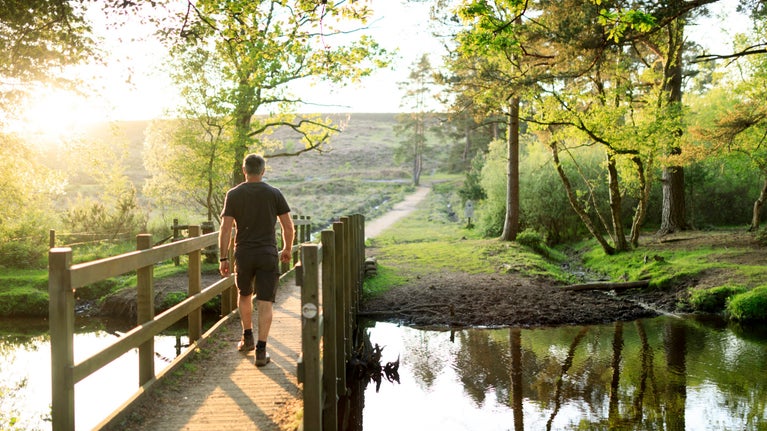3 March 1928
Bramshaw Commons
464.23 acres of land within Bramshaw Commons acquired from Mrs Briscoe Eyre. This included the twin bowl barrow on Furzley Common. The land was bequeathed with a gift of timber.

The New Forest has a long history that dates back almost a thousand years. Humans have been living within, changing and sustaining the forest since the Bronze Age, and continue to do so.
In 1079 William the Conqueror took ownership of the area as his own hunting forest. He enforced a forest law, preventing local communities from using the forest to graze their livestock, hunt and forage for food or even build fences, as these activities would interfere with William’s hunting pursuits.
After the death of William, and his successor Rufus, the rights of the common people were eventually restored in the 1217 Charter of the Forest. A special Verderers' Court was set up to enforce the laws of this Charter and protect these rights.
Commoners of the New Forest are people who occupy land or property to which attaches one or more rights over the forest, first laid out in the Charter of the Forest (1217).
Many of these common rights survive today in the New Forest and are still protected by law. They are attached to land or property (rather than an individual) and people who are entitled to them are called ‘commoners’.
Protecting the commoners’ livelihoods, common rights and the forest landscape are the 'verderers', who have a hugely important role in the life of the New Forest to this day. They employ a team of ‘agisters’ who assist with the management of commoners’ animals.

In 1923 the Forestry Commission was put in charge of the forest’s 26,000 hectares of crown land, while the National Trust owns parcels of common land, totalling 1,600 hectares, of what is known as ‘The Northern Commons’.
These hold special meaning to the local communities; being on the edge of the forest, they were and continue to be highly populated and enjoyed by a diverse range of user groups.
The Northern Commons also hold special rights over the crown lands, for example, they are one of the only places you will see sheep grazing.
The National Trust has looked after New Forest Northern Commons since 1928. Here is a timeline of the key moments.
3 March 1928
464.23 acres of land within Bramshaw Commons acquired from Mrs Briscoe Eyre. This included the twin bowl barrow on Furzley Common. The land was bequeathed with a gift of timber.

Find out how to get to the New Forest Northern Commons, where to park, the things to see and do and more.
Discover the New Forest Northern Commons. With plenty to explore, find out more about what you might see on your next visit.

Caring for the New Forest is a big task. Learn how our team of rangers and volunteers work to protect rare lowland heathland, a terrain that supports a rich variety of wildlife.

Learn about people from the past, discover remarkable works of art and brush up on your knowledge of architecture and gardens.
